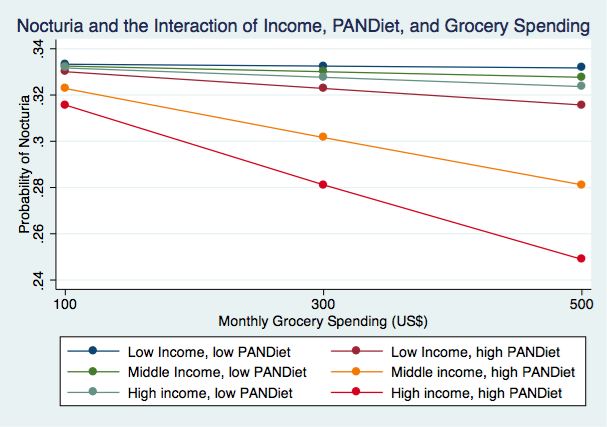|
Back to 2015 Joint Annual Meeting
Eat Right and Wake Up Less? Exploring the Link Between Socioeconomic and Dietary Factors and Nocturia
Julien Dagenais, Steven L Chang
Brigham and Women's Hospital, Boston, MA
IINTRODUCTION AND OBJECTIVES
Nocturia is a significant healthcare problem in the United States. Prior studies have suggested an inflammatory component to nocturia, and we hypothesized that dietary factors may play a role and may be influenced by spending and socioeconomic status.
METHODS
We analyzed cross-sectional data on men and women over age 40 from the National Health and Nutrition Examination Survey between 2007-2010. Data was collected on baseline sociodemographic, clinical, and dietary factors. Dietary intake was converted to a PanDiet quality score. With nocturia as the primary outcome, we performed logistic regression analyses to examine contributing socioeconomic risk factors. We then employed marginal effects to predict how family income, grocery spending, and dietary quality interacted to predict odds of nocturia.
RESULTS
Our study cohort included 8,946 individuals. On multivariable logistic regression, increasing quintiles of family income predicting decreased odds of nocturia (p<0.001). The confluence of family income, diet quality, and grocery spending had a significant interaction effect (p<0.001), whereby increased spending on higher quality dietary choices resulted in significantly decreased odds of nocturia, particularly among higher income families (Fig 1).
CONCLUSIONS
Family income, as manifested by grocery spending and dietary quality, is a robust predictor of nocturia. Given the nationwide impact of nocturia, it may be worthwhile to introduce health policy changes that propagate improved preventive care through access to cheaper higher quality foods.

Back to 2015 Joint Annual Meeting
|

